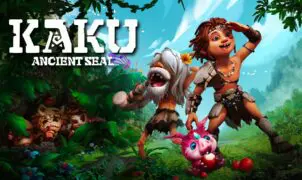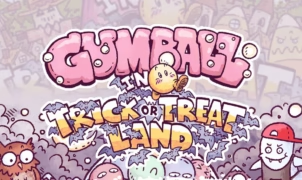The highly anticipated sequel to the surprising hit that was Knights of the Old Republic has finally been released for the PC. Only a few times has the Star Wars universe has been so appealing as a video game. RPGs aim for a higher level of immersion than other genres, and this series is succeeding. Star Wars games have come in all genres, but there have been no decent RPGs until the KOTOR series. Star Wars Knights of the Old Republic II: The Sith Lords has been anticipated by gamers that played the original, even before the game was announced, it’s finally out on the market. Is it an honorable sequel or a flop? This review will answer that while not giving away the storyline.
GRAPHICS
The graphical style and quality are the same as the first KOTOR. This makes the game look a bit dated, especially if you compare it to the graphical quality of games that came after KOTOR. This does not mean that the game has bad graphics. The only problem is that it does not look like a lot of effort was put into enhancing the look of the game beyond that of its precursor.
A few things that have improved are the particle effects and the overall effects in the Force powers, and other attacks. This game is a flash and bang party. The lighting effects add a spectacular touch to the already powerful attacks you have at your disposal. This is an example of the visuals helping the experience of the whole game, because you are a Jedi after all, and powerful, so logically your powers have to back up that notion. Even non Jedi have spectacular weapons and sheer firepower. So, any weapon you use will look menacing and simply cool. The best parts of the graphics found in KOTOR II are once again the amazing environments and the variety of them, due to the different planets you can visit via the trusty Ebon Hawk (yes, it’s back!). This helps the game to have varied worlds, and makes the experience have a more epic feel. Because your adventure will not take place on one planet, you will literally fly across the galaxy during your explorations. Some planets are the same as in KOTOR, yet there are also some new planets that look appealing.
If you didn’t play the original game, you will probably be more impressed by the graphics in the sequel. However, KOTOR has lush environments and epic locales aside from the variety of creatures and characters you find on the way. KOTOR II does not disappoint when it comes to awe-inspiring worlds. Everything on the planets – old and new – will make the experience all the better.
SOUND
There’s nothing like the sound of lightsabers clashing in the morning. Part of the appeal of the Star Wars movies are the soundtracks and sound effects, and the same goes for the games. Lightsabers and blasters sounding throughout the game make you feel like you are in that world. As one of our senses, hearing goes straight to the brain and makes you feel immersed in the game. Both KOTOR games have outstanding scores, and the sonoric experience is one that shouldn’t be missed. The fights you engage in sound as exciting as they are. The sounds are not meant to be realistic (this is, after all, a fanstasy/sci-fi game), but are intended to induce an adrenaline rush.
One element of the sound that’s worth applauding is the dialogue between characters. If you thought the ones found in the first game where long, just play KOTOR II to see the difference. Long conversations with sound take up a lot of space, so the merit lies on the effective compression of the sound in general (which is not an easy task). Not only are the conversations longer, but also more elaborate and your choices come with more ramifications.
The exciting sonoric experience helps the not-always-exciting fighting system (one with many pauses) appear to have a quicker pace. Fans of big bangs and particle throwing lightsabers will have a blast with KOTOR II.
GAMEPLAY
Back again is the loved by many and hated by others battle system. The semi-static battles help the strategic element of the game, yet the action suffers a little as a result. For gamers out there thinking it’s a turn-based battle system, think again. The original KOTOR brought a hybrid of the two types of battle systems available in RPGs, and it worked like a charm. At the start of every battle the game pauses, and you have to choose the first four actions every character in your party will do (if you don’t, the default actions will be performed). Then, you unpause the game and watch the action take place. That sounds pretty static, but it isn’t because you have to keep choosing the following actions as the battle goes on via a mini menu at the bottom of the screen. This helps to keep you alert of what’s happening on-screen and prohibits you from being just an observer. If it’s too complicated, you can pause the action and choose those subsequent actions with the game static. The actions range from attacks to healing to ability boosters. This is a very easy to use system, and it’s relatively deep too.
Like many RPGs, the age-old experience points system for making your character stronger is also in KOTOR II. With these experience points, you acquire new feats and abilities, along with Force Powers. Many of them are back from the first game, but new Force Powers are available as well. The abilities are class-specific, although you have the freedom to assign the points in whatever way you want. The constraint is that abilities foreign to your character’s class “cost” double. The classes to choose from are once again the Scoundrel, Soldier and Scout. Any of them can be Jedi or not. Obviously, the Jedi are the only characters that can use Force Powers or wield lightsabers. Force Powers are free for all classes of Jedi but are specific according to the tendency to the Light or Dark Side of the Force. The famous choking ability seen in the movies and the previous game is a Force Power akin to the Dark Side, while the Force Speed and Healing are on the Light Side of the Force Powers.
Another important part of the gameplay for this specific type of game is the player/NPC interaction, because what you answer during each of your chats will affect, not only your tendency towards one side of the Force over the other, but also the course of the game. Some conversations can embark you on a mini-adventure expanding more than one planet. It was mentioned in the previous section of this review that the conversations are more elaborate and have different consequences this time around. This makes the game more complex and open-ended. The more options, the merrier, and you can finish the game in a variety of ways. That power of choosing your path has a great effect on the gameplay and gaming experience in general.
WHAT’S NEW, MACE WINDU?
Knights of the Old Republic II: The Sith Lords is a very worthy sequel. Although it doesn’t bring too many new cards to the table, there is enough new content to satisfy the returning gamer and newbies, including:
* New planets to explore.
* New Force Powers.
* New weapons.
* New characters and creatures.
* Start the game being a Jedi, and that rocks!
* More complex storyline and dialogue.
* More ramifications for your actions.
Those are, in a nutshell, the new additions. It’s an effective sequel that makes the statement “If it isn’t broken, don’t fix it” ring true. Some sequels try to do too much and end up doing nothing for the improvement over the original. So, if you are excited in going through another KOTOR adventure, you will be very pleased. Otherwise, the experience may be lukewarm, but if you haven’t played the original Knights of the Old Republic you will find the game impressive. That’s the merit of the people down at Obsidian: make a sequel without changing the core elements, and just add to an already great game. Ultimately, Star Wars Knights of the Old Republic II: The Sith Lords is a very good buy, and a great gaming experience.
President & CEO














Leave a Reply